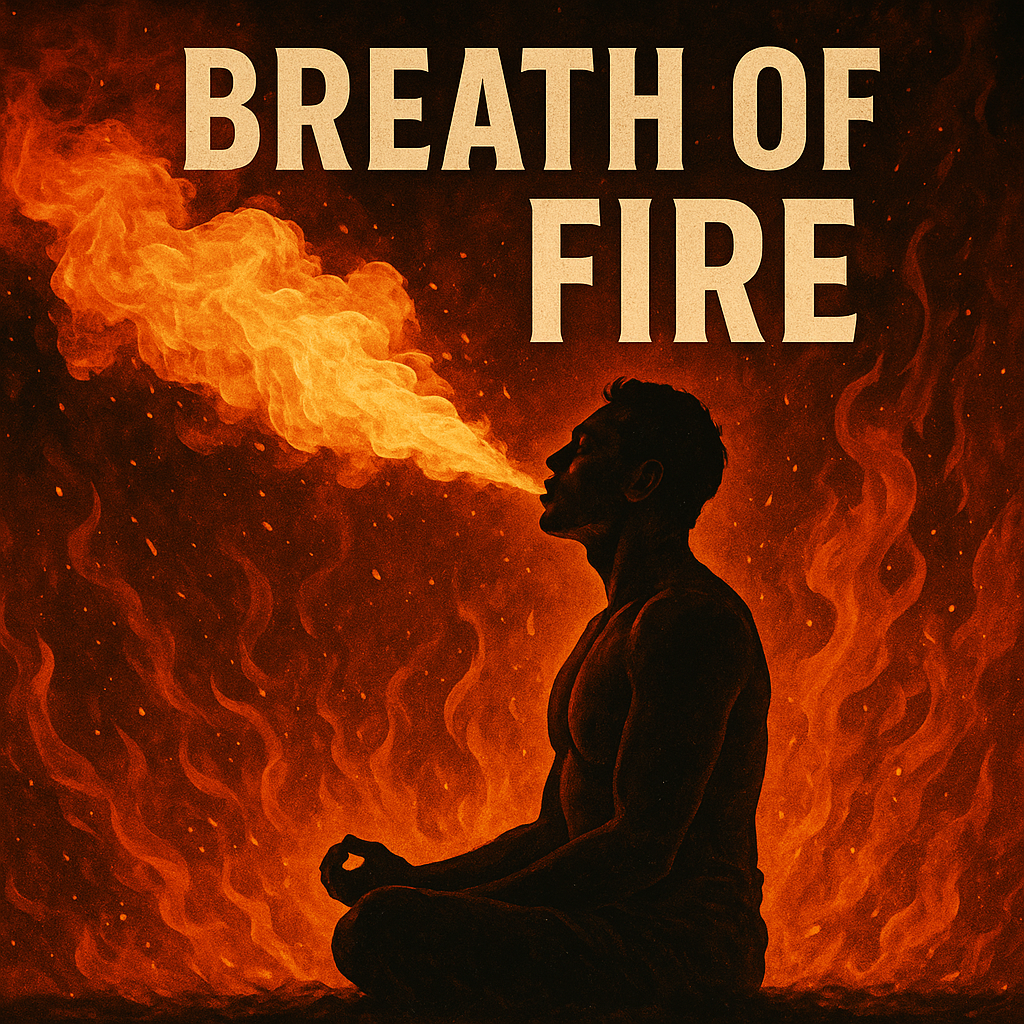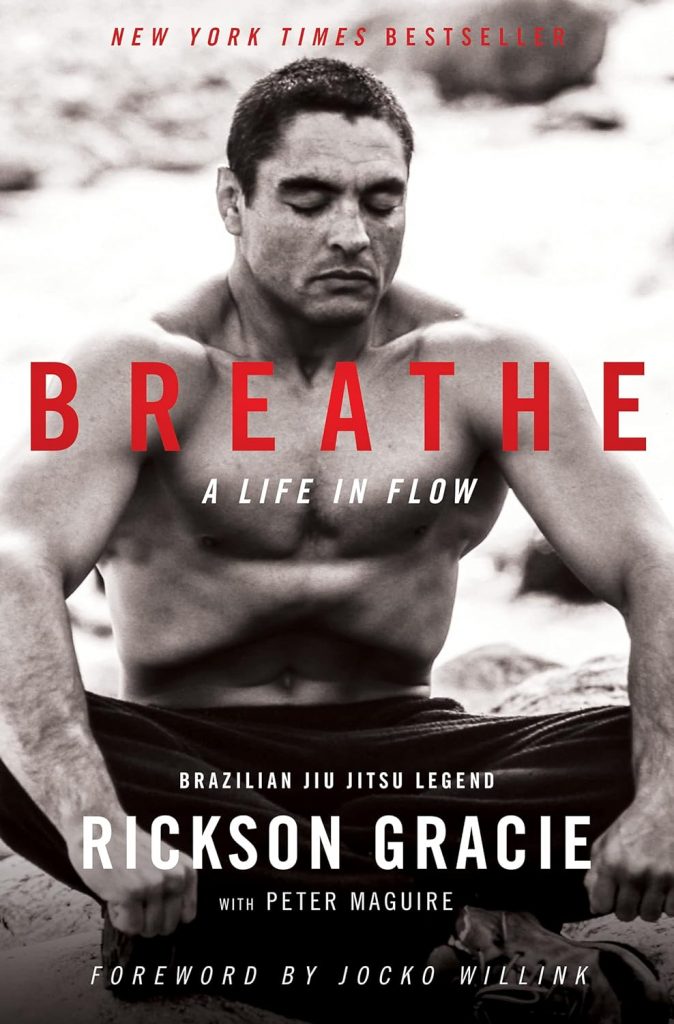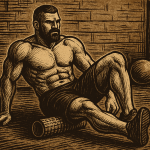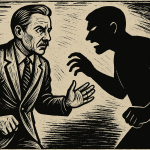Picture a man standing waist-deep in the ocean at dawn. The waves are rolling in, but he’s not moving. His belly is pumping like a piston, his ribcage expanding and contracting in rapid rhythm. No, he’s not having a medical emergency, he’s running a breath of fire session, priming his mind and body for the day ahead. That man could be Rickson Gracie, the jiu jitsu legend who made this ancient yoga practice part of his daily arsenal.
This isn’t new-age incense-burning fluff. Breath of fire is a centuries-old yogic technique designed to charge your nervous system, sharpen your mind, and put more fuel in the tank. And it’s finally breaking out of the yoga studio and into locker rooms, MMA gyms, and performance labs.
What Exactly Is Breath of Fire?
Breath of fire — known as Kapalabhati in Sanskrit — comes from the Kundalini yoga tradition. “Kapalabhati” translates to “skull shining,” which is about as poetic a promise as any exercise can make. Yogis believe it cleanses your body’s energy channels and wakes up the mind.
Instead of slow, deep breaths, you take rapid, rhythmic breaths, pumping the air in and out from your diaphragm. The inhale happens passively; the exhale is sharp and forceful. Think of it as a controlled, repeated sneeze through your nose, only without alarming your training partners.
It’s not just yoga folks who use it. Breath of fire has shown up in martial arts, freediving, surfing, endurance sports, and even acting, where control of breath equals control of presence.
How to Do It Without Passing Out
If you’ve never tried it before, start slow. This is a power tool, and like all power tools, you don’t start at max RPM.
1. Posture
Sit comfortably with a straight spine. You can do it cross-legged on the floor, on a bench, or even standing, but keep your chest open.
2. Focus
Mouth closed. Breathe through your nose. Eyes can be closed or softly focused ahead.
3. Movement
Pull your belly in sharply as you exhale through your nose. Let your inhale happen naturally — the air will rush back in as your belly relaxes.
4. Rhythm
Start with one breath per second for 30 seconds. As you get comfortable, build up to 2–3 breaths per second for one to three minutes.
5. Recovery
After a set, take a few slow, deep breaths and notice the buzz in your body. That’s your nervous system lighting up.
Pro tip: If you get dizzy, stop. You’re overdoing it. This is about energizing, not hyperventilating yourself into the mat.
Why It Works: The Science
Breath of fire is basically controlled hyperventilation. That might sound bad, but in short bursts it can:
- Increase oxygen delivery to muscles by improving CO₂ tolerance.
- Activate the sympathetic nervous system — the same system that gears you up for a fight.
- Strengthen the diaphragm and core muscles (yes, this counts as ab work).
- Improve focus and reaction time by waking up the brain’s reticular activating system.
- Aid detox by expelling stale air faster and stimulating circulation.
One study published in the Journal of Alternative and Complementary Medicine found that Kapalabhati practice improved reaction time and motor performance in participants. Another, in International Journal of Yoga, reported benefits for respiratory endurance and parasympathetic balance after consistent practice.
The physiological takeaway? You’re teaching your body to handle high-energy output without spiraling into panic breathing. That’s gold for anyone who’s ever gassed out mid-roll.
Rickson Gracie’s Ocean Ritual
Rickson Gracie didn’t just win fights, he made them look like art. Part of that came from his breathing discipline. His version of breath of fire, often done standing in water up to his chest, combined rapid diaphragmatic contractions with mental focus.
Why in the water? Resistance. Every pump of his core had to push against hydrostatic pressure, making the workout both breath training and strength training.
Rickson credits this practice with giving him an almost unfair edge in cardio, mental calm under pressure, and the ability to recover faster than his opponents. The guy wasn’t just fighting people, he was controlling the oxygen economy of the fight.
Other Famous Practitioners
Breath of fire has slipped into the routines of a surprising range of people:
- Wim Hof — The “Iceman” uses a modified version as part of his cold exposure training.
- Sting — The musician credits yoga and breathwork for sustaining his energy on long tours.
- Gisele Bündchen — Supermodel, surfer, and breathwork advocate.
- Laird Hamilton — Big-wave surfer, uses similar breathing patterns for oxygen efficiency.
- Tony Robbins — Does a three-set breath priming routine every morning, part of which resembles breath of fire.
Breath of Fire vs. Box Breathing
They’re both breathwork, but they’re different animals.
Breath of Fire
- Purpose: Energize, activate, prepare for action.
- Timing: Warm-up, pre-fight, morning kickstart.
- Effect: Sympathetic nervous system activation (fight/flight).
- Purpose: Calm, control, recover.
- Timing: Post-training, between rounds, stress management.
- Effect: Parasympathetic nervous system activation (rest/digest).
Think of it like this: Breath of fire is your espresso shot before sparring. Box breathing is your chamomile tea after.
How to Work It Into Training
Warm-Up Tool
One minute of breath of fire before shadowboxing, rolling, or drilling can wake up your lungs and sharpen focus.
Active Recovery
Between high-intensity rounds, 30 seconds of gentle breath of fire can help flush CO₂ and keep you from mentally sagging.
Mental Priming
Before a match, use it to shift into a ready state — alert but not frantic.
Cautions and Contraindications
- Don’t do it if you have uncontrolled high blood pressure, heart issues, or are pregnant without clearance from a doctor.
- Always start light and short.
- Don’t combine it with maximal breath holds until you understand your limits.
Your Seven-Day Challenge
For the next week, start your morning or training with one minute of breath of fire. Keep a log. Notice how it changes your energy, focus, and recovery. By day four, you’ll know why yogis, fighters, and CEOs alike are hooked on it.
Final Word
Breath of fire isn’t magic. It’s a skill. Like jiu jitsu, you get better with reps, not with theory. The beauty is that you can do it anywhere; in the gym, on the mat, in your living room, even in the ocean like Rickson.
You don’t need incense or a guru. Just a spine, a diaphragm, and a willingness to look a little strange for a couple of minutes. What you get in return is sharper focus, deeper endurance, and a nervous system that works for you instead of against you.
That’s worth breathing for.







Comments by The Dapper Savage